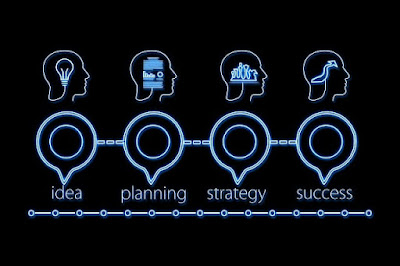The Ultimate Guide to Protecting Your Data from Cyber Threats in 2025
In today's interconnected world, protecting your personal and business data has never been more important. With the increasing frequency and sophistication of cyberattacks, securing your data is no longer an option but a necessity. Whether you’re an individual looking to safeguard your personal information or a business owner aiming to protect sensitive customer data, the risks of data breaches and cyber threats are very real.
This guide will help you navigate the complex world of cybersecurity and provide actionable steps to protect your valuable data from evolving threats in 2025 and beyond.
Understanding the Evolving Cyber Threat Landscape
In 2025, cyber threats are more advanced than ever. Cybercriminals are constantly developing new tactics to exploit vulnerabilities, and the landscape is becoming increasingly diverse. Some of the most common cyber threats include:
- Ransomware: Malicious software that locks your data and demands a ransom for its release.
- Phishing Attacks: Fraudulent attempts to acquire sensitive data through deceptive emails, messages, or websites.
- Malware: Harmful software designed to damage or infiltrate your systems and steal data.
- Data Breaches: Unauthorized access to sensitive information, which can lead to identity theft or financial loss.
- Insider Threats: Employees or contractors who intentionally or unintentionally compromise data security.
These threats pose a significant risk to individuals and businesses alike. It’s crucial to understand the types of threats you may face in order to implement effective protective measures.
Top Strategies to Protect Your Data from Cyber Threats in 2025
Now that we’ve covered the types of cyber threats, let’s dive into actionable strategies you can use to safeguard your personal and business data. These methods will help you build a solid defense against cybercriminals.
1. Strengthen Your Passwords and Use Multi-Factor Authentication (MFA)
Weak passwords are a major vulnerability that cybercriminals exploit. Use strong, unique passwords for each of your accounts and systems. Combine uppercase and lowercase letters, numbers, and special characters for maximum strength. To avoid remembering too many passwords, consider using a password manager.
Additionally, always enable multi-factor authentication (MFA) wherever possible. MFA adds an extra layer of security by requiring a second form of identification, such as a one-time code sent to your phone, in addition to your password.
2. Keep Your Software and Systems Up to Date
Software and system updates are essential for protecting your data. Developers regularly release updates to patch security vulnerabilities that hackers can exploit. Always install updates promptly, whether they’re for your operating system, browser, or any applications you use. Many programs offer automatic updates, so make sure this feature is enabled.
3. Implement Data Encryption
Data encryption is a powerful tool to protect your sensitive information. It converts your data into a coded format that can only be decrypted with the proper key. Even if cybercriminals manage to intercept your data, they won’t be able to read it without the decryption key. Encrypt sensitive emails, files, and cloud storage to add an extra layer of protection.
4. Secure Your Network with Firewalls and VPNs
Firewalls act as a barrier between your network and the outside world, blocking unauthorized access while allowing legitimate traffic to pass through. Installing a firewall on your devices and network is one of the easiest and most effective ways to prevent cyberattacks.
A Virtual Private Network (VPN) further secures your network by masking your IP address and encrypting your internet traffic. This is especially important when using public Wi-Fi networks, which are often vulnerable to hackers.
5. Educate Yourself and Your Team About Cybersecurity
Education is key to preventing cyberattacks. Many cyber threats, such as phishing, rely on human error. Ensure that you and your team are aware of the common tactics used by cybercriminals and how to recognize suspicious activity. Regularly conduct training sessions to keep everyone updated on the latest threats.
6. Back Up Your Data Regularly
Data loss can occur due to various reasons, including cyberattacks, hardware failure, or accidental deletion. To mitigate the risk of losing valuable information, regularly back up your data to an external drive or cloud storage. Ensure that your backups are encrypted and stored securely.
7. Monitor Your Data and Accounts
It’s important to monitor your online accounts for any suspicious activity. Set up alerts for any unusual login attempts, financial transactions, or changes to your accounts. Implementing a monitoring service for your business can help detect potential data breaches or cyberattacks early, allowing you to respond quickly.
How Businesses Can Protect Their Data in 2025
Businesses are prime targets for cybercriminals, making it essential to have robust cybersecurity measures in place. In addition to the strategies listed above, businesses should consider the following:
- Develop a Cybersecurity Policy: Create a comprehensive cybersecurity policy that outlines the security practices and procedures that employees must follow. This should include guidelines for using secure passwords, reporting suspicious activity, and safeguarding sensitive data.
- Invest in Cyber Insurance: Cyber insurance can provide financial protection in the event of a cyberattack or data breach. It can help cover the costs of data recovery, legal fees, and compensation for affected customers.
- Secure Third-Party Relationships: Ensure that your business partners and third-party vendors follow stringent cybersecurity practices. Many data breaches occur due to vulnerabilities in third-party systems.
Conclusion: Stay Ahead of Cyber Threats in 2025
In 2025, protecting your data requires vigilance, proactive measures, and continuous adaptation to new threats. Cybercriminals are always looking for vulnerabilities, but with the right strategies in place, you can significantly reduce the risk of an attack. From strong passwords and multi-factor authentication to data encryption and employee education, these steps will help you safeguard your personal and business data in the face of growing cyber threats.
By staying informed and proactive, you can ensure that your valuable data remains secure in the ever-changing world of cybersecurity.


0 Comments